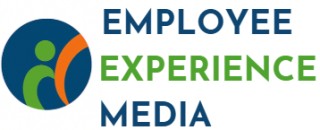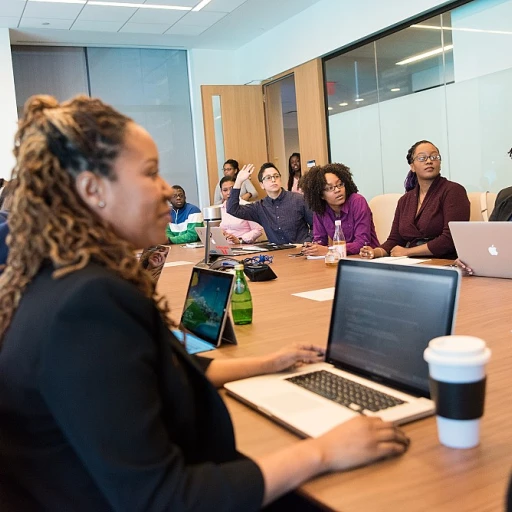
Understanding the Evolution of Talent and Intelligence
The Changing Landscape of Workforce Development
In today's rapidly evolving job market, understanding talent and intelligence involves recognizing the ongoing evolution in how businesses approach recruitment challenges and talent acquisition strategies. Gone are the days when innate talent alone was sufficient to secure a spot in a high-performance team. Organizations are increasingly focusing on nurturing a growth mindset to continuously develop skills essential for their workforce.
The concept of "talent" has broadened significantly. It's no longer just about having the right skills; it’s about possessing a willingness to evolve and adapt through continuous learning and development. With the increasing emphasis on data, workplace intelligence now involves a structured approach towards talent intelligence, allowing businesses to navigate the complexities of today's labor market.
From understanding skill gaps to employing advanced data analytics techniques for talent management and workforce planning, organizations are required to be more strategic in their approach. The focus is on crafting a robust talent pipeline that reflects the dynamic needs of modern businesses. While some skill sets continue to be prioritized based on market demands, the underpinning attributes revolve around agility and the ability to learn new competencies over time.
Businesses are also putting significant effort into creating environments that value employee growth and development. This is often seen in organized initiatives that target specific development goals, supporting both individual progress and business objectives. As we explore further, integrating effective mentorship and proficiently measuring growth will play pivotal roles in how companies assess and enhance the intelligence and skill sets of their teams across time.
The Role of Continuous Learning in Employee Growth
The Significance of Ongoing Knowledge Acquisition
In today's rapidly evolving labor market, continuous learning is not merely an option but a requirement for both employees and organizations. This approach ensures that the workforce can keep pace with the ever-changing business landscape, where new skills and technologies emerge frequently. By embracing a growth mindset, businesses can unlock the full potential of talent and intelligence within their teams.
A crucial element of talent development is the systematic approach to continuous learning. Organizations invest in talent strategies that focus on skills-based training programs, leadership development, and talent intelligence initiatives. These efforts aim to bridge skill gaps, enhance skills intelligence, and ultimately, secure a high-performance work environment.
Furthermore, ongoing learning allows employees to adopt a proactive role in their personal and professional growth. It fosters a culture where innate talent is honed and transformed into measurable outputs over time, benefiting both the individual and the organization. Personalized learning paths and flexible learning opportunities enable employees to align their career aspirations with business goals.
Data-Driven Approaches to Learning
The integration of data analytics into continuous learning initiatives provides valuable insights into the progress and effectiveness of various programs. People analytics can identify trends and patterns, offering an evidence-based approach to workforce planning and talent management. Through this data, organizations gain a clearer understanding of where to invest their efforts for better talent acquisition and talent pipeline development.
Ultimately, continuous learning propels an organization forward by nurturing the intelligence of its workforce. It ensures that employees are equipped to adapt to new challenges and seize emerging opportunities, driving business growth in the process. For more insights into recruitment challenges and solutions, you can explore this comprehensive guide.
Creating a Supportive Environment for Talent Development
Fostering an Environment for Talent Growth
Creating a supportive environment for talent development is crucial in nurturing both talent and intelligence. For organizations, this means building a workplace where employees can feel secure in showcasing their skills and intelligence while continuously learning. A supportive environment doesn't just happen overnight; it requires a strategic approach to human resources and management.- Cultivate a Growth Mindset: Encouraging a growth mindset among employees is essential. It focuses on the belief that skills and intelligence can be developed through effort and learning over time. This will help set the stage for continuous growth and prevent a fixed mindset from stifling talent.
- Implement a Talent Strategy: Organizations should establish robust talent management frameworks that include workforce planning and talent acquisition strategies. This can ensure a steady talent pipeline, addressing skill gaps while aligning with business goals.
- Incorporate People Analytics: Using data to understand employees' skills and development needs can significantly enhance talent intelligence. A skills-based approach driven by people analytics can help tailor learning and development opportunities based on the unique requirements of the job and the individual.
- Create Learning Opportunities: Continuous learning should be at the heart of any talent development program. Providing platforms for learning and fostering on-the-job development can help employees enhance their skills. Read more about nurturing talent in the workplace.
Mentorship and Its Impact on Employee Intelligence
The Importance of Guidance in Cultivating Talent and Intelligence
In the journey of talent development, mentorship stands as a critical pillar that supports the foundation of employee intelligence growth. Mentorship serves as a bridge between existing skills and potential, facilitating the transition from a fixed mindset to embracing a growth mindset. This, in turn, nurtures both talent and intelligence in the workforce. Effective mentorship involves more than just sharing knowledge; it encompasses skills intelligence development and fosters a positive learning experience. By actively engaging in mentorship, businesses can strategically enhance their talent pipeline and workforce planning efforts, addressing potential skill gaps and aiding in talent acquisition. Mentors play a crucial role in talent intelligence by guiding employees through the complexities of their roles and the broader labor market. This guidance is instrumental in fostering growth over time, making organizations more adept at mobilizing their innate talent towards high performance. Moreover, mentoring relationships bring substantial benefits to employees. Under a mentor's guidance, individuals often develop a better understanding of their own skills, which can lead to improved work outcomes and job satisfaction. By investing both time and effort into mentorship programs, organizations can ensure their employees are well-prepared to contribute positively to the business, thus enhancing overall talent management strategies. Incorporating effective mentorship programs within an organization not only supports continuous learning but also strengthens the collective skills of the workforce. This dedication to development talent is what ultimately propels companies ahead in a competitive market, preparing them for inevitable changes and demands. As such, focusing on mentorship can be a crucial strategic move for any business aiming to cultivate a robust and intelligent workforce.Measuring Growth: Assessing Talent and Intelligence Over Time
Evaluating the Progress in Talented Minds
The journey of nurturing talent and intelligence within organizations involves a dynamic dance of both qualitative and quantitative assessments. As businesses strive to understand the impact of their development strategies, it's crucial to measure growth with a lens that captures the essence of both talent and intelligence.
Organizations today utilize an array of people analytics tools to gauge the development of their workforce. By leveraging data, they can diagnose skill gaps, track learning progress, and evaluate mindset shifts over time. Such insights are vital for understanding the high performance and potential of employees, allowing businesses to tailor their talent strategies more effectively.
While innate talent and fixed mindset perspectives have traditionally influenced perceptions of employee capabilities, there is a growing shift towards a skills-based and growth mindset approach. Businesses are now focusing on intelligence talent and skills intelligence, recognizing that continuous learning can significantly enhance employee contributions and bridge existing gaps.
The labor market demands a robust talent pipeline, which requires effective talent management and workforce planning. Talent acquisition alone isn't sufficient; building a supportive structure where employees are encouraged to learn and grow is integral to the talent development process.
Evaluating over time requires not just acknowledging the progress made in their job roles but also how they adapt in learning and apply new skills in challenging scenarios. It's this effort in talent intelligence that propels business growth, shaping a more agile and competent workforce that's ready to excel in the ever-evolving market.













